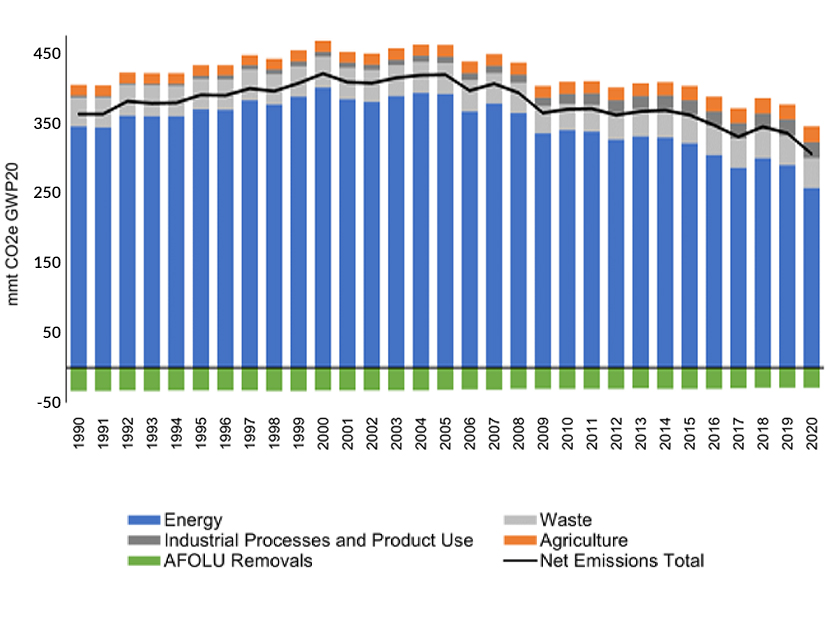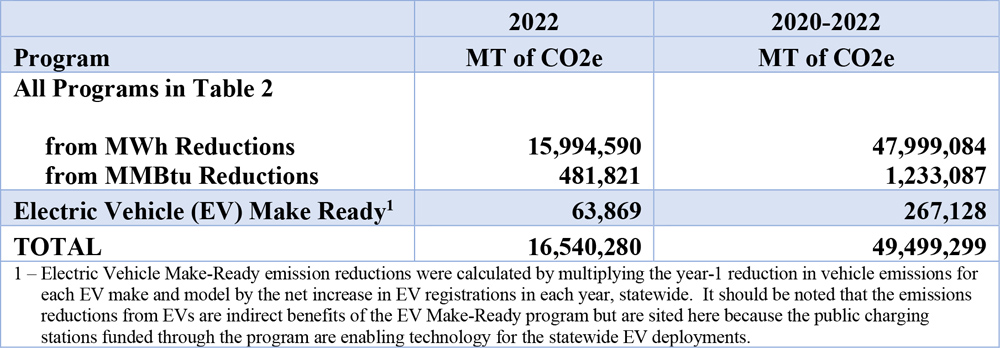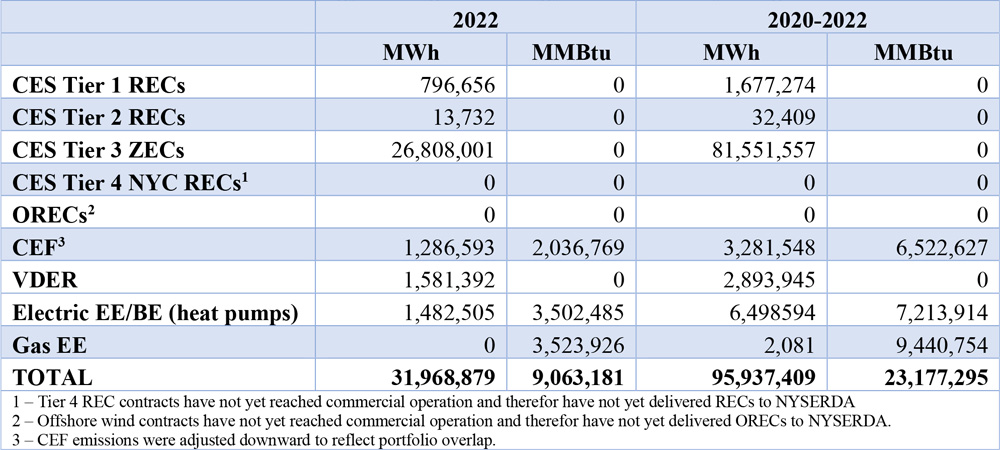New York took strong first steps to comply with climate and energy legislation mandating that it reduce its emissions and decarbonize its economy, according to a preliminary review released last week (22-M-0149).
The Department of Public Service gave an upbeat impression in its first annual progress report on New York’s compliance with the Climate Leadership and Community Protection Act of 2019.
“New York State has invested a great deal in its initial efforts to realize the clean energy growth and emissions reduction goals of the CLCPA,” reads the DPS’s conclusion.
According to the report, New York’s overall emissions production was reduced by 49,499,299 metric tons of carbon dioxide from 2020 to 2022. Mostly this was due to fossil fuel displacement, but it is increasingly being offset by EVs.
The New York State Energy Research and Development Authority during this time collected $1,871,922,708 through its renewable energy credit programs, and 95,937,409 MWh of clean energy was produced from load-serving entities procuring RECs, which contractually obligate generators to deliver certain amounts of renewable energy.
These are positive signs for New York, since the CLCPA is ambitious: 70% renewable electricity by 2030, 100% zero-emission electricity by 2040 and net-zero emissions statewide by 2050. The policy also mandates the state procure at least 6 GW of solar energy by 2025, 3 GW of storage resources by 2030 and 9 GW of offshore wind by 2035.
The DPS noted its results do not yet include Tier 4 or OSW contracts, known as ORECs, because these projects are not in commercial service but should bring even greater benefits once operational. (See OSW Developers Seeking More Money from New York. See NYSERDA Seeks 1-Year Delay for Tier 4 RECs.)
The report added that the CLCPA necessitated “an extensive restructuring of the existing grid,” which has driven renewed investment into both upgrading antiquated lines and adding more resilient lines that can tolerate greater voltage conditions from more advanced technologies.
The DPS also highlighted New York’s initiative to decarbonize not only the larger barriers to net zero, but also other critical sectors like transportation and housing, and the DPS commended the state’s actions to promote disadvantaged communities, such as obligating them to receive at least 35% of all decarbonization investments. (See NY Climate Justice Panel Sets Disadvantaged Community Criteria.)
Despite this relatively rosy assessment, New York risks not meeting its goals, given how NYISO reports predict future reliability shortfalls that may require emissions-producing peaker plants to operate past their expected retirement. (See NYC to Fall 446 MW Short for 2025, NYISO Reports.)
These reservations were seen at the DPS’s monthly meeting, during which the inaugural report was delivered and discussed, and several commissioners voiced concern about future costs and reliability. (See “CLCPA Update,” Energy Transition Costs Give NY Utility Commissioners Pause.)
The DPS report calls on state agencies, including itself, to be “more transparent to the public” about its CLCPA compliance to help New York stay on track to achieve a decarbonized economy by 2050. The agency promised to improve its scoring guidance and data reporting criteria (14-M-0094).
Clean Energy Progress
The DPS’s first report card on New York’s CLCPA compliance had useful metrics to show the state’s progress:
-
- 66% of New York’s projected 2030 electricity is covered by renewable energy projects that already are operating, contracted or awarded.
- 46% reduction in statewide emissions produced from electricity and 7% reduction in gross emissions between 1990 and 2019, according to the Department of Environmental Conservation.
- 1% of the renewable energy standard obligations were met by LSEs, while 99.8% of LSEs under PSC jurisdiction met their RES obligations in 2021 (15-E-0302).
- 5% of the zero energy credit obligations were met by LSEs, while 99.8% of LSEs under PSC jurisdiction met their ZEC obligations in 2021 (15-E-0302).
- 5,999 MW of solar resources are either committed or completed as of November 2022, according to the NY-Sun midpoint review, and the NY-Sun program is on track to spend $200 million on projects by 2025 (21-E-0629).
- 1,301 MW of energy storage resources has been awarded or contracted as of October 2022, which represents 87% of the 2025 target (18-E-0130).
- ~12,000 MW of proposed ESRs are circulating in New York’s distribution-level or wholesale-level interconnection queues.
- 144,037 EVs were registered in New York as of May 2023, while 8,002 level two and 1,215 direct current fast charging ports were serving the state’s fleet, according to EValuateNY.



